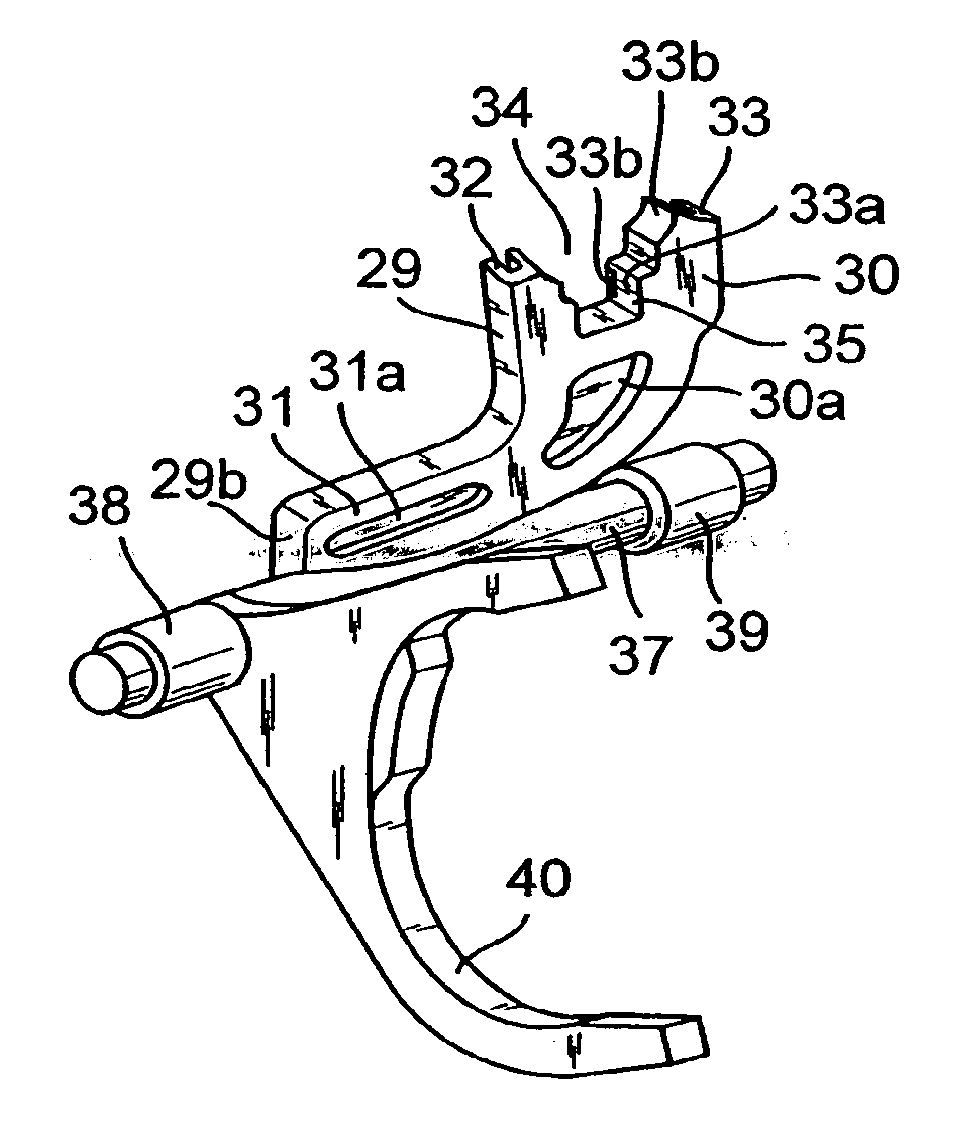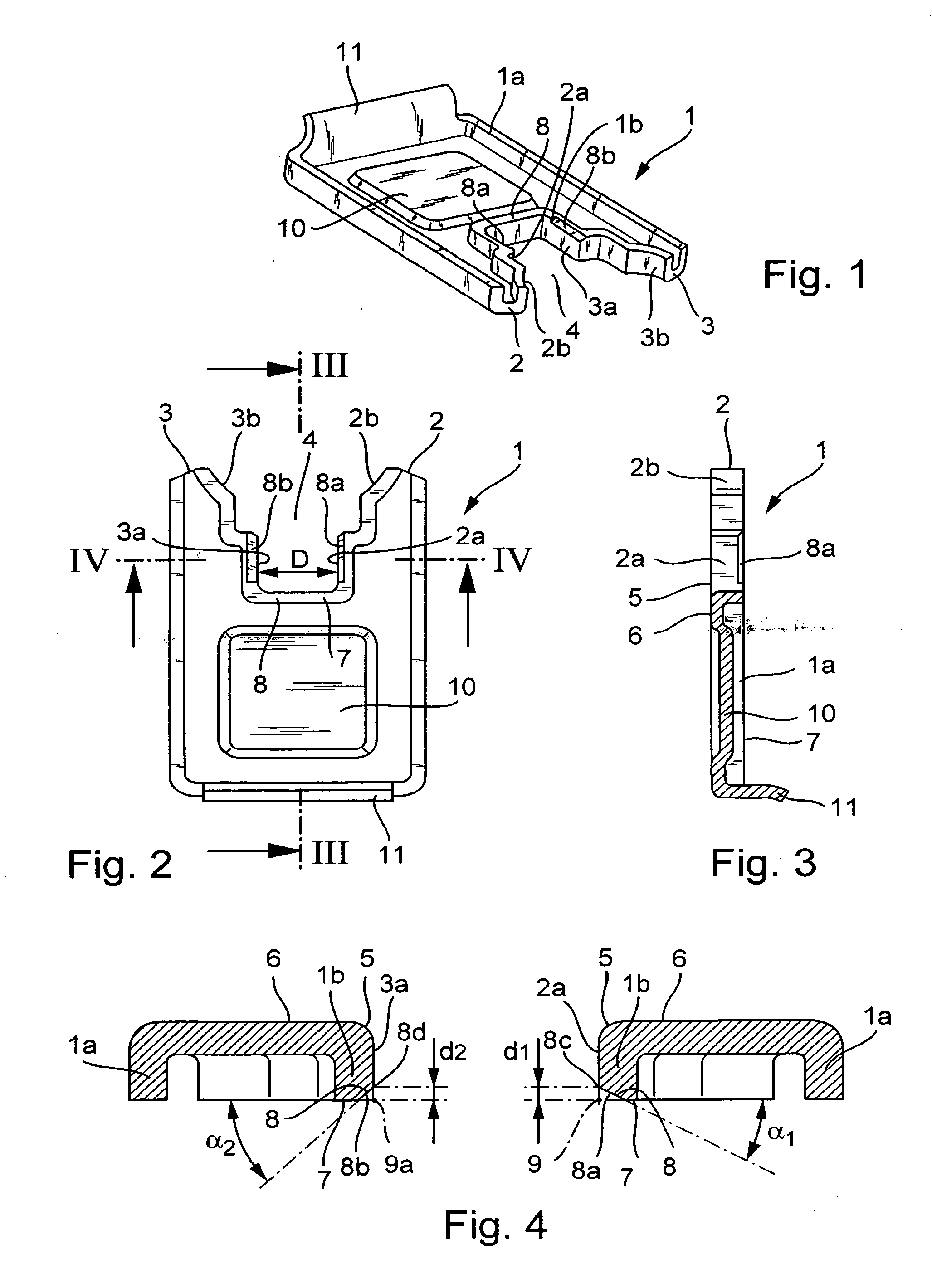Shifting arm
a technology of shifting arm and face, which is applied in the direction of mechanical control devices, process and machine control, instruments, etc., can solve the problems of low material consumption for the production of shifting arms of this type, and achieve the effects of increasing the resistance to wear of the face, high accuracy, and great material saving
- Summary
- Abstract
- Description
- Claims
- Application Information
AI Technical Summary
Benefits of technology
Problems solved by technology
Method used
Image
Examples
Embodiment Construction
[0035] FIGS. 1 to 4 illustrate a shifting arm. The shifting arm 1 is formed from a flat formed part which is formed without cutting from a thin sheet of 2 mm. The formed part has a fork-shaped design and has two prong-shaped projections 2 and 3. The projections 2 and 3 bound a recess 4. The recess 4 is partially bounded by four stop faces 2a, 2b, 3a, 3b lying opposite one another. A shifting finger (not illustrated) strikes against the stop faces 2a and 3a. The stop faces 2b and 3b, which are designed lying opposite each other, are, in a locking position, a stop for a locking cylinder or locking pin (not illustrated). Each of the stop faces 2a, 2b, 3a, 3b is formed on a section 1b which hems the recess 4 and is angled away from meaning out of the plane of the sheet or the plane of the shifting arm 1 or of the projections 2 and 3. The stop faces 2a and 3a face each other and are aligned plane-parallel to each other. The clear distance D between the stop faces 2a and 3a is realized, b...
PUM
 Login to View More
Login to View More Abstract
Description
Claims
Application Information
 Login to View More
Login to View More - R&D
- Intellectual Property
- Life Sciences
- Materials
- Tech Scout
- Unparalleled Data Quality
- Higher Quality Content
- 60% Fewer Hallucinations
Browse by: Latest US Patents, China's latest patents, Technical Efficacy Thesaurus, Application Domain, Technology Topic, Popular Technical Reports.
© 2025 PatSnap. All rights reserved.Legal|Privacy policy|Modern Slavery Act Transparency Statement|Sitemap|About US| Contact US: help@patsnap.com



